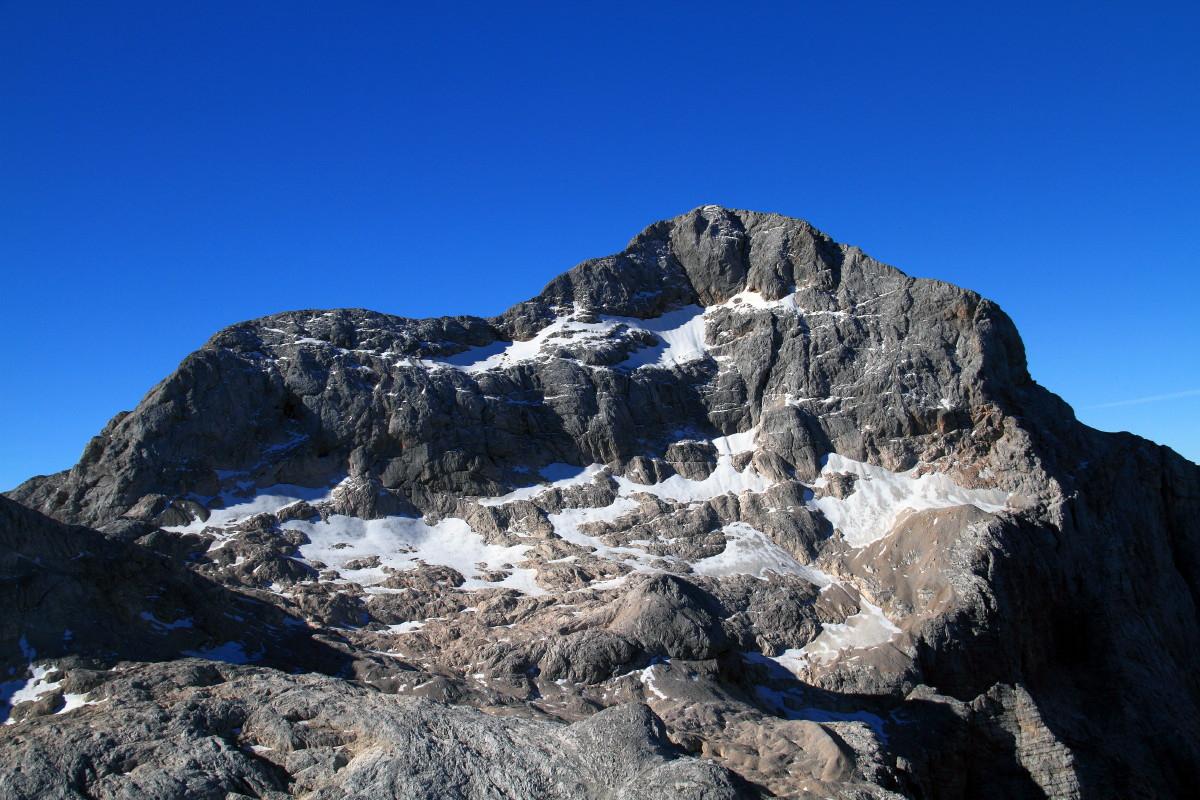
The Triglav Glacier was traditionally known as “Green Snow” (“Zeleni sneg”) to those residents of Slovenia’s valleys who ventured high above the tree line to encounter the splendor of permanent ice cover just below Slovenia’s highest peak. A combination of different ice layers a resulted in the glacier’s unusual color, ranging from greenish to blue.
The glacier has probably been around for centuries, but it reached its maximum size at the end of the Little Ice Age in the 19th century. More than 100 acres (45 hectares) in size, it was frequently mentioned by chroniclers of the Slovenian Alps and graced the canvasses of the era’s painters. The Triglav Glacier was a prominent landmark just beneath Slovenia’s national symbol.
In the 20th century, everything began to change. After World War II, researchers from Ljubljana began to monitor the state of the Triglav Glacier on a regular basis. At the time, its size was already greatly reduced from its 19th century peak, and its decline has continued through the years. With its exposed, sunny location, the Triglav Glacier has been particularly susceptible to climate change, and the recent period of unusually warm annual cycles has reduced what was once a vast expanse to just a few patchy remnants of ice. According to some observers, the Triglav Glacier no longer qualifies as a true glacier at all.
In fact, it has recently been surpassed in size by the Glacier under the Skuta (“Ledenik pod Skuto”). In the 1970s and 1980s, the glacier, located in the Kamnik-Savinja range, was a popular destination for late-season skiers and even boasted a ski lift. Some of Slovenia’s skiing champions were able to train at the glacier during the early summer months.
The Glacier under the Skuta has also been affected by global warming, but its more shady location has prevented it from disappearing altogether. In fact, it is now considerably larger than the Triglav Glacier (or what remains of it), and is recognized as the most southeasterly glacier in the Alps, as well as one of the lowest in terms of altitude.
Like the Triglav glacier, the Glacier under the Skuta is under constant surveillance by Slovenian scientists, who take part in various climatological conferences. Through their work, the teams contribute to our understanding of the rapid shrinkage of glaciers throughout the Alps, and shed new understanding on how climate change – both natural and manmade – is changing our planet forever.
Jaka Bartolj/Geografski inštitut Antona Melika


































































